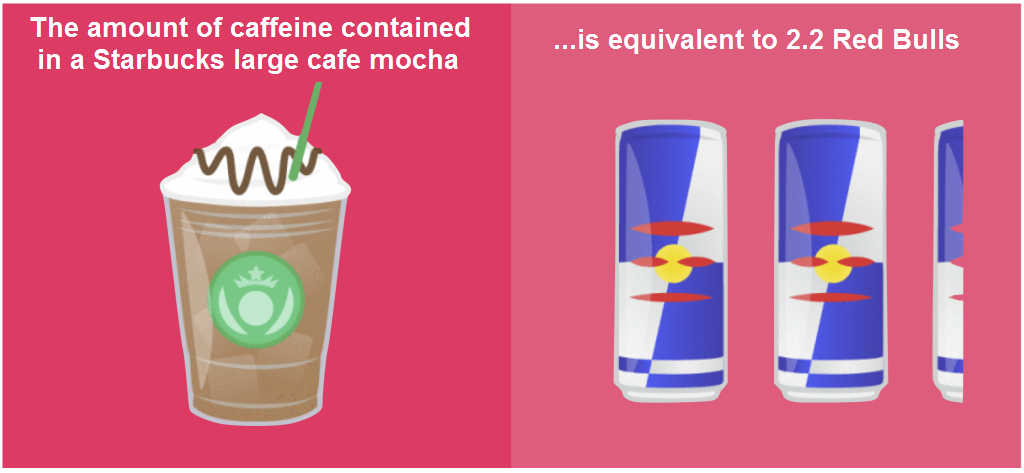Certainly you’ve heard the sentence that became famous thanks to Al Pacino in The Godfather II: “keep your friends close and your enemies closer”. Well, this is exactly what you have to do with your competitors on social networks, with the exception of viewing them as enemies but rather as allies who, without being aware of it, will propel your business towards success.
And what’s the best way to keep your competitors close on social networks? Be observing them, seeing what they’re doing and carefully analyzing them.
That is: performing competition analysis must be part of your strategies on social networks.
Think about it, how are you going to be able to know if your marketing on social media strategy is functioning if you don’t know what your competitors are doing?
And better yet: how are you going to be able to make intelligent decisions that will help you keep your clients up to date and attract new ones if you know nothing about your competition?
Burn this in your mind: the closer your competitors are, the better the possibility you’ll have of knowing whether your social media actions will do well or if instead there’s something you should enhance, leave out or revise.
Now, how do you perform a competition analysis an have it be effective, what data should you analyze from your competitors and what tools can help you during the process?
I’ll be going into to detail on all this information so that when you finish reading this article, you’ll feel like a true expert in competition analysis. Additionally, I’ll be sharing a template that you can download and can begin your competition analysis right now. Do you dare become one of the greatest spies of all time?

Why should you perform a competition analysis? 12 reasons that will make you say “yes, I should”
If you are wondering why it’s so important to perform and analysis of your competitors, then you’re going to find all the answers you ever needed so you never have to ask yourself this question again.
Analyzing your competitors will not only help you to thoroughly get to know them, know what they are doing, how they’re doing or to check out if they’re growing more or less but will also help you find out where you stand in regards to them while at the same time it will enable you to make decisions that will help you improve the potential of your strategy on social media. But there’s still more, much more.
So, if you’re wondering why you should invest some of your oh so valuable time to conducting this competition analysis, today I’m giving you reason that will help you want to start right away (in fact, the good news is that you’ll be able to start as soon as you’re done reading). Take notes!
Why perform an analysis of your competitors? 12 reasons to say “yes”
- It’ll provide you with a general overview of your industry.
- It will help you know how your competitors are communicating with their audience.
- You’ll know what your competition is doing at all times, wherever you are.
- You’ll be able to identify the strong and weak aspects of your strategy and theirs.
- It will enable you to get to know your clients better and have a clearer idea on their habits.
- It will become your inspiration for doing new things and implementing more powerful actions.
- It will help you detect things you never thought about and that are relevant.
- It will enable you to find out what you’re doing well and what not (and act accordingly).
- You’ll avoid surprises since you’ll be aware of all your movements.
- It’ll help you to stay ahead of your competition since by analyzing them you’ll be able to predict their behavior.
- It’ll allows you to monitor the activity and evolution of your competitors and thus you can compare yourself to them.
- You’ll avoid getting bogged down and it’ll further enhance positioning yourself as a bench mark in your sector.
And finally, seeing what others are doing will help you improve your own strategy on social networks and cause your business to be much better.

But it’s important that you remember this is not about spying on your competition, but rather analyzing them to be able to get the most out of your own strategy. Basically:
Your competition analysis doesn’t consist of spying or copying but rather in taking ideas and finding your competitive advantage.
And now that you know why you should frequently perform an analysis of the competition, do you want to know how to do it and what you should take into account to be able to get the max benefits? Well then, let’s go!
How to make a competition analysis on social networks in 5 steps
-
Identify who your competition is
The first step in analyzing your competitors is knowing who they are and where they are; so search Google on as well as your competition’s social networks and make sure you at least find a four competitors. By doing so, you’ll have enough data to analyze.
For your competition analysis to be comprehensive you must focus on two types of competitors:
- Direct competition. On one hand there’s your direct competitors, meaning, the businesses who are in the same market and offer the same product or service as you, for example Coca-Cola y Pepsi o Samsung y Apple.

- Indirect competition. On the other hand, there’s your indirect competition, meaning, the businesses who are in the same marketing with the same target public, but they sell a different product despite covering the same needs. As is the case with Red Bull and Starbucks since they offer different products but both are directed at the same type of clients; one could opt for a refreshing energy drink and the other a coffee, even though they’ll basically the same product
-
Define what data you’re going to base your competition analysis on
Once you’ve identified your competitors, you’ll have to define what data you’re going to analyze.
For example, what social networks do your competitors have a presence on? How many weekly and daily publications do they put on Facebook, Twitter and every other social media channel? How many followers do they have? What type of content do they publish? How many interactions to they generate from likes to shares and comments? Do they respond to their audience?
In summary, incorporate any and everything that you think could help you get to know more about your competition and analyze them with more efficiency!
And if you don’t know where to start not what data to incorporate in addition to the ones we mentioned earlier, then don’t worry because in step 4 we’re giving you a downloadable template so you’ll know what data to focus on.

- Keep the best tools at hand
We’re now in the Internet era where everything has become easier than ever, so don’t worry if you don’t know how to analyze your competition: there are tools specifically designed to help you make an analysis of your competition in the most comprehensive way possible.
Although finding this information is something you can easily do by reviewing your competitions’ profiles, here are a few tools that can help you speed up the process:
- Quicksprout. It allows you to compare up to four competitors at once and shows you how much content they share on each social network.
- Fanpage Karma. Monitors your presence on social networks and that of your competition. Their free plan offers the possibility to analyze the last 90 days on accounts and also allows you to compare performance, growth, most used content, number of fans, interactions, publication frequncy, engagement depending on the day, time and much more.
- Audiense (formerly known as SocialBro). It enables you to gauge your brand as well as your competition on Twitter by comparing your actions against your competitors.
- Twitter Counter. With this tool it’s possible to make a comparison of followers and tweets on Twitter, however its free plan only allows you to compare a max of six months.
- Like Alyzer. It enables you to thoroughly analyze a Facebook page by simply entering the URL: analyzes basic information to performance and publications by page.
- Quintly.This is similar to Fanpage Karma and enables you to monitor social networks (for example Facebook; also has a free six-month trial basis). It provides you with information on KPIs, fan behavior, most active users, response times and interactions with users and localization among other things.
-
Gather data and analyze the information
And here comes the moment of truth: performing your competition analysis, detecting what your competitive edge is (and working on enhancing it) and seeing what useful information you can extract from your competitors in order to improve the performance of your strategy on social networks.
In order to analyze all this its fundamental that you have a document or template where you save all the information as clearly and visually as possible with the goal in mind to always have them at hand and be able to analyze them as needed.
And so you don’t waste any time on this -and as a step to save yourself some work-, I’ve created an excel document with all the data you should include in the analysis of your competition. You can directly download it to your computer.
Either way, it’ll be very practical for you since you’ll only need to fill in the corresponding cells.
Click on the image to download it to your computer.
-
Make decisions and design strategies
Once you’ve gathered and analyzed your competition’s information a very crucial moment comes into play: making decisions that’ll change your company’s course.
Here’s the real hard truth on why you should analyze your competition: so your company improves. Now that you have all the data it’s time to decide what you’ll do with it.
Take advantage of this information by brainstorming or making an idea cloud and redefining your social media strategy. But it also goes beyond all this, like enhancing the actions you see working well, getting rid of the ones that aren’t and don’t forget about testing and implementing new actions until you find the new formula that allows you to move forward while leaving your competition in the dust.
If you analyze your competition well and take the appropriate actions there’ll be no one to stop you.

Great, so what did you think about these 5 steps for performing an analysis of the competition? Are you going to implement them? Was the information useful? Leave us your comments!
Ah! And like always, don’t forget to share this article on social networks so all small and medium sized businesses can apply these tips and soar even higher. And if your competition catches wind, don’t worry about it, just remember Al Pacino and tell them “it’s nothing personal, it’s just business”
If you found this article to be really interesting and want to hone in on the enormous potential of social networks, then I recommend you take a look at these articles:
- 6 powerful persuasion techniques to get more clients
- 5 social network templates that’ll save you loads of time
- Storytelling: what is it and why should every Social Media Manager be using it
- Downloadable checklist to devise your Social Media Plan



